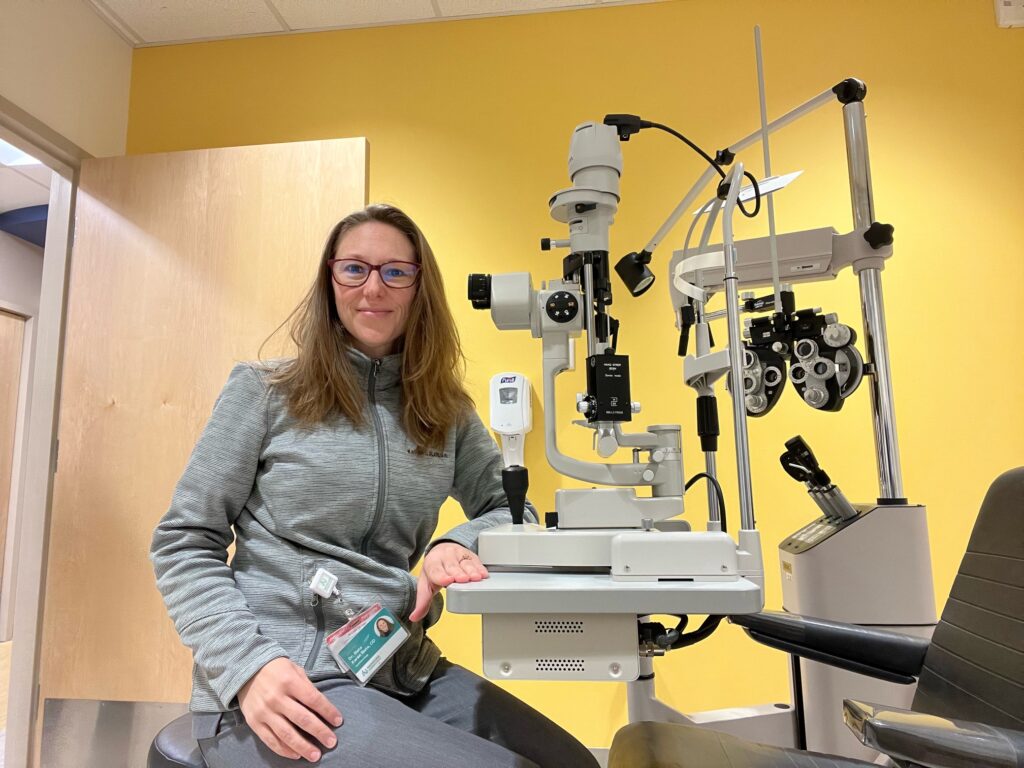

Karen Slate, OD, has created a career for herself in the nonprofit sector, an area she didn’t even realize was a full-time option for optometrists. “I work with two nonprofits and have a contract to provide disability exams for veterans,” she says.
For the first 12 years of her career, Dr. Slate worked in a medically oriented private practice. Her boss and mentor, Glenn Corbin, OD, was a joy to work with, she recalls. But when the COVID-19 pandemic struck, “I was stuck inside with my thoughts, and I started re-evaluating everything about my home life, family and goals,” she recalls. She loved the work she did, but “when I entered health care, my goal was to do the most good for the most people. So I felt like I was missing a portion of that,” she says.
Leaving her practice position was “the hardest decision of my life,” she says, but she felt like she needed to go big on her mission. Volunteering here and there would not fill the void she felt.
IMMENSE NEED
“I stumbled into senior care first,” she says. “I immediately fell in love with the nonprofit model and saw that was what I was missing in private practice.” She spends three days a week at a medical facility for seniors in Milford, Delaware. Seniors who fall below certain income thresholds can come there for vision, dental and hearing care. She is one of two ODs who serves these patients in the southern part of the state; another five ODs work in an office in Wilmington, covering the northern region.
These patients may be living on their own, with family or in a care facility. But transportation can be a challenge for them, so being able to provide three services in one facility is a big help, she says.
Once she was working there, she heard that the region’s Vision to Learn program, which runs as a nonprofit in 14 states plus Washington, D.C., was looking for an optometrist willing to help children across Delaware. So she took on that role, and two days a week, she travels to schools in the area.


“We have a van, and I have one person, Angie Buntin, who works with me. She’s a jack-of-all-trades: optician, tech and driver of the van,” Dr. Slate says. The process runs smoothly. Once the car and bus lines are gone, the Vision to Learn van pulls up. One by one, a nurse or coordinator brings children from grades K-12 out to the van for an exam. “They have signed consent forms from their parents that allow them to be examined. We have a fundus camera, but we do not do dilations,” she says. If children need eyeglasses, those will be provided. If they need a referral, Dr. Slate manages that.
Once or twice a month, Dr. Slate works for an organization that contracts to supplement what the Veterans Administration program provides to vets. “These are disability exams done from inside a medical office. The suite I’m in has providers of several different disciplines,” she says.


SENSE OF PURPOSE
Dr. Slate says that working feels different to her now. “There’s an interesting sense of freedom because I move from place to place, but I feel like I’m accomplishing more in terms of reaching people than I was before,” she says. And the work itself is different. “These are not routine refractions.” Her patients may have undetected vision problems or systemic disease. She is often one of the first health care professionals these patients have seen.


Unfortunately, in some cases she is also one of the few providers patients see on any kind of regular basis. “Recently I was at a middle school that we had last been to about four years ago. Some of these kids were trying to wear the same eyeglasses now that we gave them years ago. Or they had lost the ones we provided and had been waiting for us to come around again,” she says.
“I did not know the nonprofit world of work was out there. Certainly, there were initiatives where I could volunteer for a day or a few days, but I didn’t know that this kind of option existed,” she says. “I learned a lot in private practice, but these patients are different. They’re often medically fragile and complex cases where I’m coordinating with other providers. I definitely spend more time with my patients, and I am so grateful that I have this chance to take care of them.”
Read stories from other ODs who have found their career paths in atypical models of practice here.



